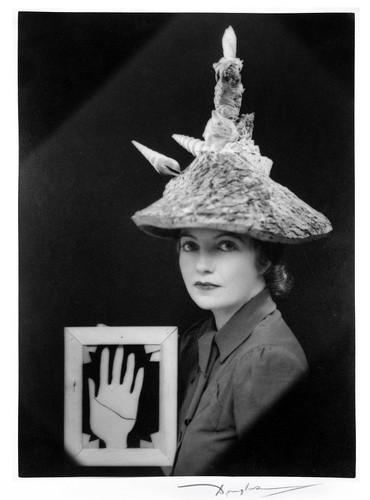Eileen Agar Paintings for Sale1899-1991
Eileen Agar was an English painter and photographer.
Born in Buenos Aires, Argentina, Eileen Forrester Agar arrived in England aged 6, sent to a private school in Canford Cliffs. At her second school, Heathfield, Ascot, Agar's teacher Lucy Kemp-Welch encouraged her to continue to develop her art. Her family moved to London in 1911, though by 1914, with the onset of war, she was sent away to Tudor Hall, Kent.
Before the war ended, Agar attended the Demoiselles Ozanne to improve her French and while she was there she took weekly oil painting lessons at the Byam Shaw School of Art in Kensington. Agar found the Byam Shaw too academic and pleaded with her family to allow her to look elsewhere to continue her schooling. This infuriated her mother and after an argument with her parents Agar notes in her diary that she got up early, ate lunch with her sisters, and packed her bags and departed from Paddington Station. She left a note for her parents stating that she was on her way to Truro and St Mawes where she would stay with a family friend the De Kays.
In 1920, she studied with Leon Underwood (1890-1975), at his school in Brook Green, making friends with Gertrude Hermes and Blair Hughes-Stanton. She then attended the Slade School of Fine Art, London (1921-24) alongside Rex Whistler, Cecil Beaton and her first husband Robin Bartlett. With him and others, Agar travelled around France and Spain. In 1925 she married Bartlett, the year that she destroyed the majority of her early work. The pair lived together in a house in Dieppe. Agar described him as "the escape-hatch which freed me from the clutches of my family". In 1926, Agar met the Hungarian Joseph Bard, the man with whom she would spend the next 50 years, and whose passion for jewels she would integrate into her practice.
Between 1927 and 1928, Agar and Bard lived in London, and in Portofino in the winter, where Agar met Ezra Pound, who was to become a friend. 1928, Agar and Bard moved to Paris, where she met the Surrealists André Breton and Paul Éluard, with whom she had a friendly relationship. In the period 1928-30, Agar studied with the Czech cubist, František Foltýn. With Pound, Agar visited Constantin Brâncuși's studio.
Agar was a member of the London group from 1933 and her work was selected by Roland Penrose and Herbert Read for the International Surrealist Exhibition at the New Burlington Galleries, London. In 1936, she exhibited with the Surrealists both in England and abroad. From '36 she experimented with automatic techniques and new materials, taking photographs and making collages and objects, for example The Angel of Anarchy (fabric over plaster and mixed media, 1936-40; London, Tate).
By the 1960s Agar was painting paintings with nods to her Surrealist past, including images of abstracted, flat shapes. In 1965, Agar began painting in acrylics, a medium in which she enjoyed trying out new pigments and colour combinations. She had been invited to paint large-scale canvases in preparation for a retrospective at the Commonwealth Institute, London, and this new, quick-drying medium was better suited for the task than oils. Roland Penrose wrote the catalogue essay, and in it remarked how these new acrylic paintings play with perception and illusion: "I find that I am led into deep sensations of time and space in some recent paintings where sharply delineated forms hover in darkness so that the blackness that surrounds them is alive in its own right and others where transparent forms with softer edges merge together creating new volumes and a magic sense of depth, a vortex of colour which carries the eye with rhythmic motion into a realm which transcends our limited field of observation". Agar continued painting while in old age, and acrylic canvases from the '70s and '80s were purchased by a number of public collections; the Government owns Bride of the Sea, of 1979, and Slow Movement (1970) is in the Scottish National Gallery of Modern Art. Matisse had joyfully described his cut-outs as "a simplification", and you feel that the same thought may have struck Agar.
In 1985, Agar was included in Whitney Chadwick's seminal book Women Artists and the Surrealist Movement. She published her autobiography in 1988, and was elected to the Royal Academy in 1990. Agar was the subject of a major retrospective at the Scottish National Gallery of Modern Art in 1999, and more recently at Pallant House Gallery, Chichester, and Jerwood Gallery, Hastings.
For portraits and images of the artist, see the National Portrait gallery, link here. For a story on the artist by Andrew Lambirth see ArtUK.

